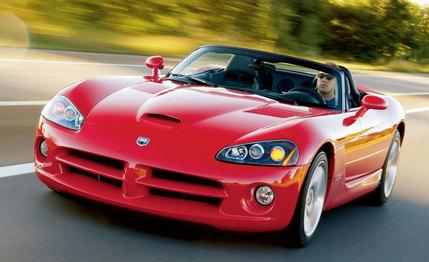
 Road Test
Road Test
*(Norm Nietzsche, in an interview with the Reverend Al Sharpton.)
The keys to this new Viper came with a warning. "Socks," said road-test editor André Idzikowski. "You wanna be wearing socks. The footwell—it's, like, warm."
"Socks," I repeated. "Check."
"And shorts are, uh, out," he continued. "Those big sills. They're even warmer."
"No shorts," I confirmed. "But what if I transport a girl? No shorts for her, either?"
"That," replied André as he stroked his chin with two fingers, "is a philosophical question."
C/D: Mr. Sartre, were you warned not to subject bare epidermis to almost any of the Viper's brutish components?
Jim-Bob Sartre: Alors, c'est ça l'Enfer. Je n'aurais jamais cru . . . ["So that's what Hell is. I'd never have believed it . . ."]
Here's something equally difficult to believe: The Viper is 10 years old. During that span, there have been three major flavors: the original 400-hp RT/10, with its little-loved "sport bar" toupee; the 1996 450-horse GTS coupe, which helped Dodge bag three FIA GT2 titles; and now the SRT-10, whose V-10 has been bored and stroked for an extra 17 cubes and a bonus 50 ponies. Yeah. That's what it needed. More power.
The car is now a true convertible, with a glass backlight and a clamshell lid that's easy to lower. Flip one central latch on the windshield header, then shove the whole works backward into a dedicated bin. The leading edge of the cloth roof remains exposed but is sufficiently rigid to look like and act as a hard tonneau. Very existential.
To make the droptop work, however, Dodge had to expand the car's wheelbase 2.6 inches. In the ensuing overhaul, the engineers added sharper-edged bodywork, a dead pedal, a red starter button, and bigger brakes—bread-loaf-size Brembos gripping 14-inch rotors. Still no cruise control. No backup radar. Just the basics. Even the trunk is finished in raw sheet-molding compound that smells like Vicks VapoRub and looks like the inside of a battery.